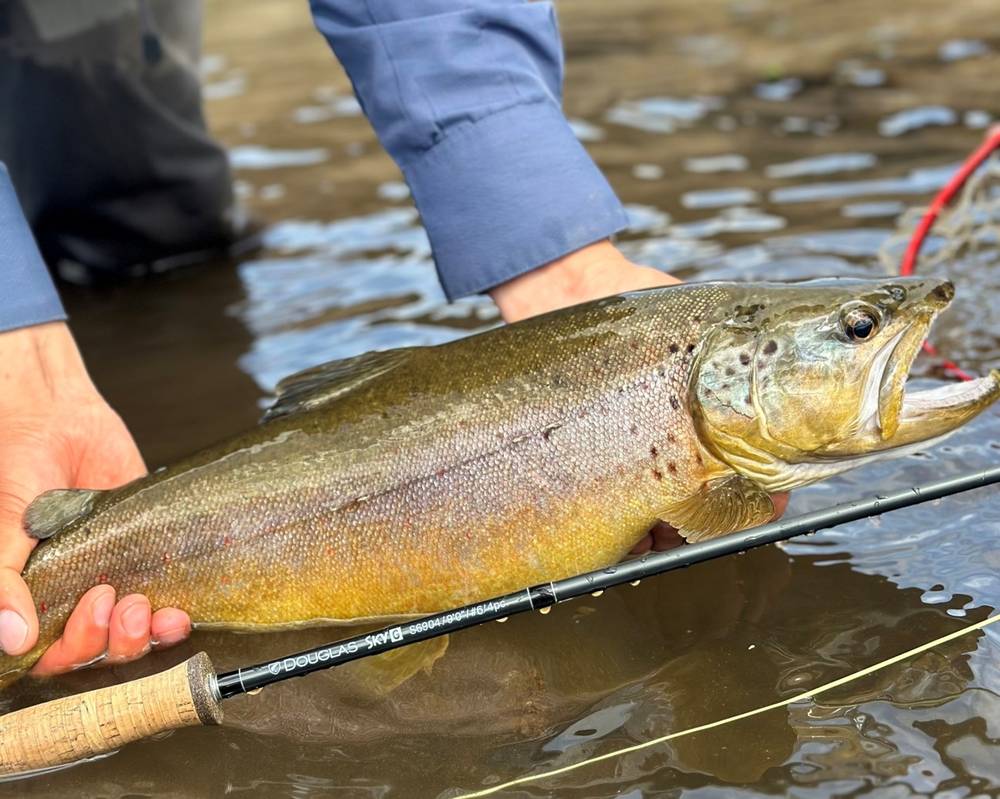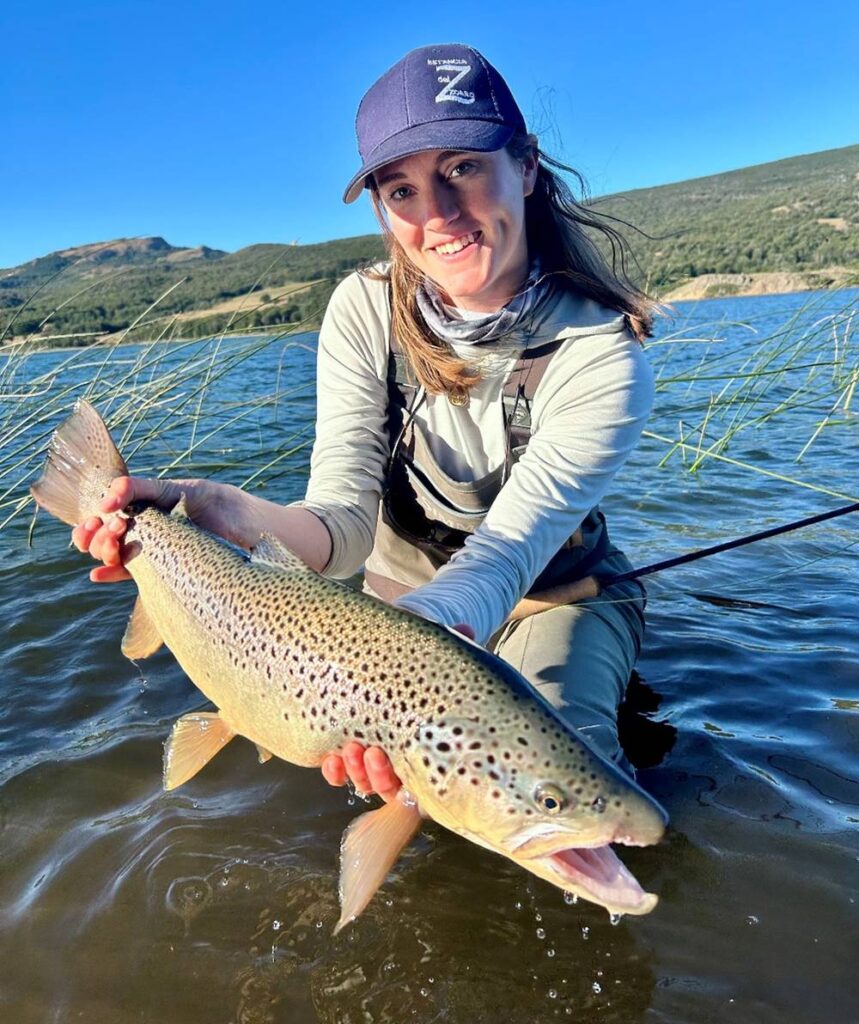By Melissa Ceren, LPC

Each step you take, dozens of grasshoppers flee and some land on the water’s surface. While they squirm and struggle to get back to land, a watchful and ominous figure appears from the depths of the spring creek. The figure takes on a glowing golden hue as it rockets up to the surface. The mouth of the fish engulfs the grasshopper without mercy.
However, it is not one of the squirming live grasshoppers. It’s your imitation, on your fly line.
With your trusty Douglas fly rod bent in half, you jockey for position as the clever fish runs for either bank of the five foot wide creek in an attempt to break free of the menacing line. The fish is no match for your determination as you strategically play him into your net.
After capture, you admire the fish. A twenty-two inch wild brown trout without any flaws. A thought crosses your mind – “maybe he has never been caught before.” You release the fish back to its home and sit on the riverbank to reflect on your experience and to recover from the massive adrenaline spike.
This is fly fishing in Patagonia.
Fishing in Chile (and Argentina) is much different than fishing in the United States. A majority of the rivers are freestone, so there are no dams which affect fish and bug life. Therefore, the water structure and bug imitations are a lot different than those of tailwaters which are common in the United States.
Dry fly fishing is the draw for anglers to come to fish in Patagonia. At certain times of the year, there are beetles that grow up to 3 inches long, called Cantaria beetles. At other times, trout spring out of the water to eat dragonflies.

While the fish are significantly less pressured than in the United States, you have to contend with obstacles such as untamed thorny Calafate bushes and Juncos reeds that line the banks and instantly wrap your line a million times around. Thus, it is important to use much heavier tippet than you are accustomed to – if you can believe it, we used 0-2x tippet on dry flies. It is also important to practice your aim and accuracy, as it is crucial to land your first cast at the edge of the banks and reeds but not in the thick of them. Crucial flies to use in Patagonia are the “Fat Albert”, black dung beetles, grasshoppers, caddis, and leeches.

Because of the constant high winds in the area, fast action rods are imperative for cutting through the wind and accurately landing your fly. We did well using the 5 and 6 weight DXF and Sky G Douglas rods. With their fast action and soft tips, these rods are extremely accurate, which allowed us to fish each part of the water effectively. The sensitive rod tips also aided us in keeping the wild browns on our line as they breached out of the water and shook their heads back and forth. The 5wt Sky G is an ultra light rod, so casting it all day into the wind causes significantly less fatigue, even with the weight of larger flies.
You can certainly find river access on your own if you are on a budget, and it is important to respect local customs and land ownership. When in doubt, ask locals about public access. However, if you are able, I would recommend finding a fishing lodge for exclusive water access and guidance from locals who know the waters by heart.

We stayed at Cinco Rios Lodge located in Coyhaique, Chile. Their hybrid program allows you to float the lakes and rivers around Coyhaique and then travel to the countryside for small creek and trophy lake adventures.
Cinco Rios is a first class experience all around. Not only did we catch more large trout than we could count with the help of world class guides, but our epicurean curiosities for cuisine were exceeded by incredible cooks who crafted local dishes. When you leave this lodge, you feel like family and you will already be planning your next trip back.
You’ll have to decide for yourself, but our experience indicates that some of the best fly fishing in the world is in Patagonia. It is certainly the best trout fishing we have ever done!

Article and photos by Melissa Ceren the “The Fly Flinging Therapist.“ Melissa is a Mental Health Counselor LPCC and Fly Fishing Guide based in Colorado. Give her a follow on Instagram at @big_mac_fishing.